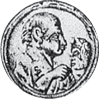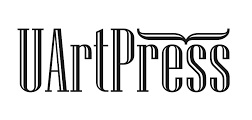The Shifting Point of Fear and Trembling in Georgy Tovstonogov’s “The Government Inspector”
Kulcsszavak:
the theatre of state socialismAbsztrakt
In 1973 The Government Inspector was staged by Georgy Tovstonogov at the National Theatre in Budapest as an example of the forced friendship between the Soviet and the Hungarian people. Although rehearsals were rather strenuous for the whole cast, the première achieved enormous success and started a dialogue with further mises-en-scène of Gogol’s comedy on Hungarian stages from Péter Gothár’s and Gábor Zsámbéki’s legendary productions in the 1980’s to László Bagossy’s and Viktor Bodó’s versions in the new millennium. The Leningradian director’s reading broke and created a tradition at the same time when it tried to discover a certain “plus” that can be set against the well-known interpretation of the play as a simple farce and a satire of country life in 19th century Russia. Tovstonogov saw this “plus” in global and cosmic fear as well as fantastic realism conceived as the principal character and the main style of the production. Turning up as a manifestation of the Mayor’s and his corrupt officials’ viewpoint obscured by utmost fear, the strange and the visionary thrust the play into infernal circles and presented the plot as the dance macabre of conscience. However, fear with the background of an autocratic regime made different interpretations possible and the production involuntarily initiated the mechanism of doublespeak. What was the privileged point of theatre people and critics alike and how did it vanish among members of the audience? My essay tries to find an answer to this question.
Hivatkozások
B.B.M., 1973.”Nem bohózatot játszunk”. Tovsztonogov a Nemzetiben. [“We won’t play a farce”. Tovstonogov in the National Theatre]. Magyar Hírlap. 8. January, p. 9.
CSÁKI, Judit, 1989. “Nem igazgatni: rendezni szeretném a Nemzetit”. Csáki Judit beszélgetése Csiszár Imrével. [“I wouldn’t like to lead but to direct the National Theatre”. Judit Csáki’s interview with Imre Csiszár]. Kritika. No. 9. p. 29.
GALSAI, Pongrác, 1973. “A revizor”. (Egy remekmű remeklő rendezése) [“The Government Inspector”. A brilliant mise-en-scène of a brilliant play], Budapest. 23. March, p. 6.
KOLTAI, Tamás, 1973. Tovsztonogov és “A revizor’”. [Tovstonogov and “The Government Inspector”]. Színház. No. 6. pp. 8-12.
LÉTAY, Vera, 1973. A polgármester. [The Mayor]. Élet és irodalom. 7. April, p. 13.
MAJOR, Ottó, 1973a. A revizor. [The Government Inspector]. Tükör. 20. March, p. 13.
MAJOR, Tamás, 1973b. Tanultam Tovsztonogovtól. [I have learned something from Tovsto-nogov]. Népszabadság. Vasárnapi melléklet. 18. March, p. 7.
MIHÁLYI, Gábor, 1973. Tovsztonogov−Latinovits, Gellért−Tovsztonogov. Nagyvilág. No. 5. p. 773-777.
MOLNAR GAL, Péter, 1973a. Tovsztonogov. Népszabadság. 10. March, p. 7.
MOLNAR GAL, Péter, 1973b. A polgármester: Kállai Ferenc. [The Mayor: Ferenc Kállai] Színház. No. 6. pp. 39-44.
SAÁD, Katalin, 1973. “’A revizor’ próbáin”. [Rehearsing ‘The Government Inspector’], in Színház. No. 6. p. 3-7.
SZOMBATHELYI, Ervin, 1973. “A revizor”. Tovsztonogov rendezése a Nemzeti Színházban. [“The Government Inspector”. Tovstonogov’s mise-en-scène in the National Theatre]. Magyar Hírlap. 11. March, p. 6.
TOVSZTONOGOV, Georgij, 1966. A rendező hívatása. [The Profession of the Stage Direc-tor] Ford. Szekeres Zsuzsa. Budapest: Színháztudományi Intézet.
UNGVÁRI, Tamás, 1973. Theaterbrief. Das Klassische und das Moderne. Budapester Rund-schau. 2. April, p. 11.
Downloads
Megjelent
Hogyan kell idézni
Folyóirat szám
Rovat
License

This work is licensed under a Creative Commons Attribution 4.0 International License.

This work is licensed under a CC BY Creative Commons Attribution 4.0 International License, which permits any use, reproduction, distribution, self-archiving and citation of the work as long as the authors are credited. The complete bibliographical data of Symbolon Journal must also be indicated, which you can find in the How to cite section on this page. If possible, please also place a link leading to the original publication. Copyright of articles belongs to the authors.




